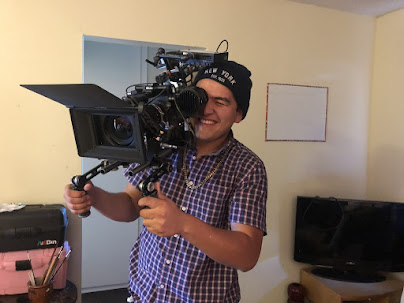Apple Beats 1 Radio CSP: blog tasks
1) How have our music listening habits changed since 1960?
We use music streaming softwares rather than radio.
2) When did Apple Beats 1 Radio launch and what is it?
2) When did Apple Beats 1 Radio launch and what is it?
Beats 1 is wholly owned by Apple and launched in 2015 as a free live streaming global 'always on' radio station. It claims to work across genres but often focuses on indie and rap music.
3) What is the difference between Beats 1 Radio, iTunes and Apple Music?
3) What is the difference between Beats 1 Radio, iTunes and Apple Music?
iTunes doesn't need a subscription fee but Apple does.
4) Why was Apple so keen to enter the online music world and compete with Spotify, Deezer and Amazon Music (and others)?
4) Why was Apple so keen to enter the online music world and compete with Spotify, Deezer and Amazon Music (and others)?
If consumers have access to all the world's music at their fingertips.
5) Why did Apple choose the three selected DJs for launch?
5) Why did Apple choose the three selected DJs for launch?
Since the 3 DJs had a lot of contact with the music world.
6) How does the use of DJs differ from Spotify, Amazon Music and other streaming services?
6) How does the use of DJs differ from Spotify, Amazon Music and other streaming services?
So the audience can listen to upcoming artists too.
7) How does the content of the Julia Adenuga show differ from Radio 1?
7) How does the content of the Julia Adenuga show differ from Radio 1?
Radio 1 is not as relaxed as the Julia Adenuga show.
8) Why does Beats 1 radio give Apple the power to make or break new artists? Is this a good thing or a bad thing for the music industry?
8) Why does Beats 1 radio give Apple the power to make or break new artists? Is this a good thing or a bad thing for the music industry?
Since Apple has a huge following. It is a good thing since new artists can be seen in the spotlight. It can also be mad because since it crushes someone's dream if they break a new artist.
9) Read the BBC feature on the launch of Apple Beats 1 Radio. Did the industry experts think it would be a success? Why?
9) Read the BBC feature on the launch of Apple Beats 1 Radio. Did the industry experts think it would be a success? Why?
They thought it would be successful because it was 24/7.
10) Give arguments for and against the idea that Beats 1 will be a threat to traditional media industries (e.g. radio stations, record shops, online music retailers etc.)
10) Give arguments for and against the idea that Beats 1 will be a threat to traditional media industries (e.g. radio stations, record shops, online music retailers etc.)
I think it will be a threat because it promotes online streaming music. It will not be a threat because it requires a subscription fee.
Audience
1) Who is the target audience for Beats1 and Julia Adenuga in particular? Refer to demographics and psychographics. The target audience should be a teenagers.
2) Why do people listen to Beats1? Which aspects of Blumler and Katz’s Uses and Gratifications theory relate to Beats 1 and its audience?
To find new upcoming artists.
3) Can the audience actively interact with the Apple Beats 1 Radio or are they passive when listening? How? Give examples.
3) Can the audience actively interact with the Apple Beats 1 Radio or are they passive when listening? How? Give examples.
They actively interact since can send tweets to the DJs.
4) Is Apple Beats 1 aimed at a mass or niche audience? How does this differ to BBC Radio 1?
4) Is Apple Beats 1 aimed at a mass or niche audience? How does this differ to BBC Radio 1?
Apple Beats 1 is aimed at a mass audience since BBC Radio 1 is not.
5) Do you think Apple Beats 1 radio will be popular with young audiences or are streaming services the future of audio-based media?
5) Do you think Apple Beats 1 radio will be popular with young audiences or are streaming services the future of audio-based media?
Yes because it is the uprising of new stars.

Comments
Post a Comment